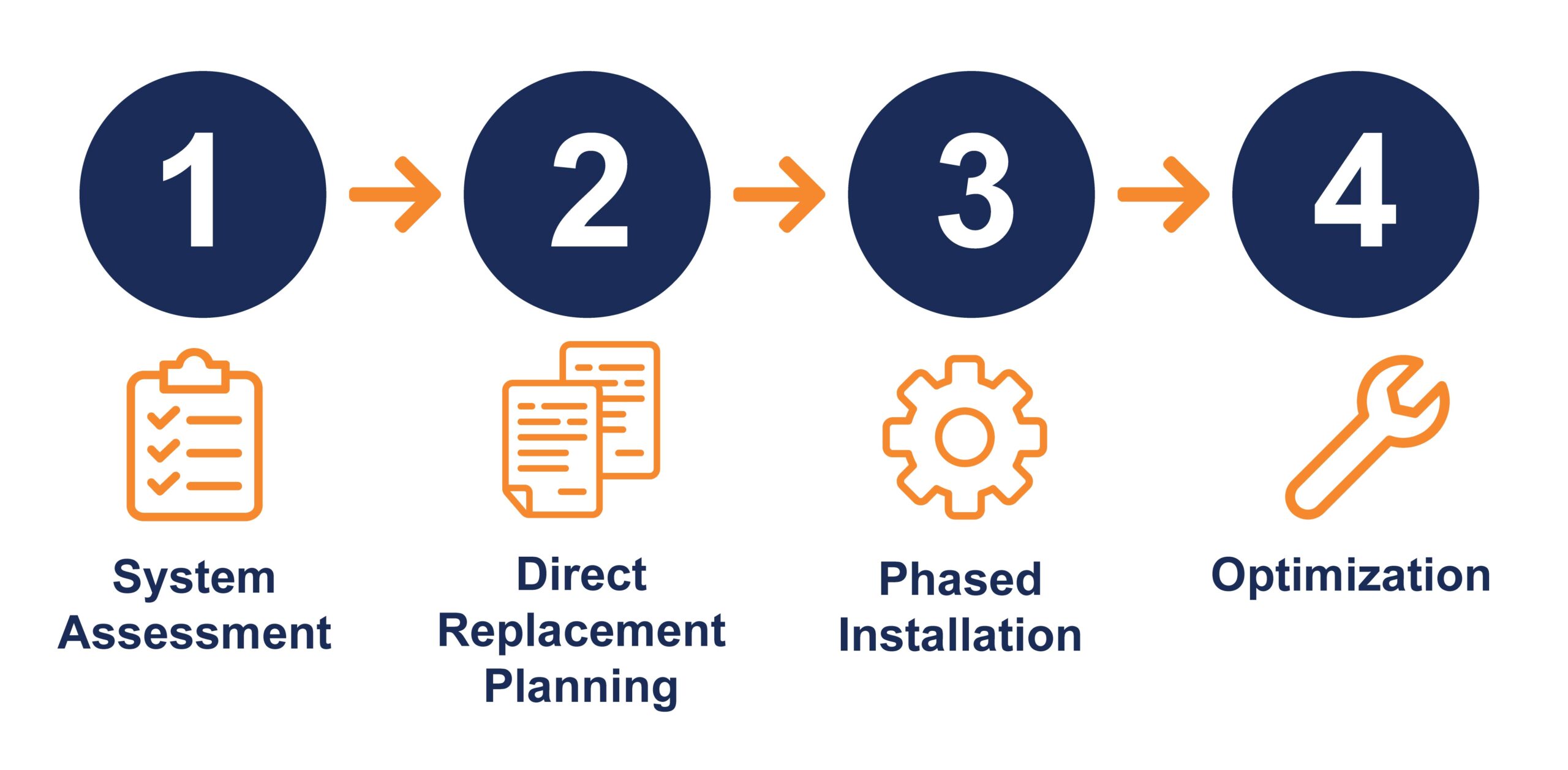Making the Right Decision for Your Facility
It’s every facility manager’s nightmare scenario: your building controls provider just announced they’re shutting down. Your building controls provider has announced they’re exiting the market. Support will end soon, parts will become scarce, and you need a plan. This guide walks you through what happens next and how to transition smoothly to a stable company that’s been serving the industry for nearly 20 years.
Act Fast: What Changes Immediately
Support Ends Technical support becomes limited as staff are reassigned, typically within 60-90 days of the announcement. Getting help with system issues becomes increasingly difficult.
Parts Become Scarce No new parts are manufactured. When controllers or sensors fail, replacements are hard to find and expensive.
No More Updates Security patches, software updates, and bug fixes stop completely. Your system stays frozen at its current capability.
Data at Risk Historical building performance data stored in provider systems may be lost when they shut down their servers.
Your Three Critical Decisions
Before you can move forward, you need to make three critical decisions:
1. What to Do with Your Data
Your building’s energy usage patterns, occupancy data, and system performance history have value. Extract and preserve this data before the provider shuts down their systems.
2. How to Handle Integration
Your lighting controls likely connect to HVAC, security, and fire safety systems. For example, when your lighting system can’t communicate with your HVAC, you lose automatic daylight harvesting and occupancy-based temperature control. Any replacement must work with these existing systems.
3. When to Make the Move
You can wait until something breaks (risky and expensive) or plan a systematic transition (controlled and cost-effective).
Our 4-Step Transition Process

Step 1: System Assessment
- • Document your current sensors, controllers, and connections
- • Extract all valuable data before it’s lost
- • Identify which equipment can be reused
- • Plan replacement priorities
Step 2: Direct Replacement Planning
- • Design 1:1 replacements for your existing functionality
- • Plan integration with your current building systems
- • Schedule implementation to minimize disruption
- • Prepare staff for the transition
Step 3: Phased Installation
- • Start with non-critical areas to test performance
- • Replace critical systems during planned downtime
- • Run parallel systems during transition when possible
- • Provide immediate support for any issues
Step 4: Optimization
- • Fine-tune the new system to match your building’s patterns
- • Train staff on new capabilities
- • Implement enhanced features that weren’t available before
- • Establish long-term maintenance plans
Why Professional Migration Protects Your Investment
Immediate Cost Savings Avoid emergency repairs and rush orders for obsolete parts. Professional migration reduces total transition costs by 40-60% compared to waiting for system failure.
We Know Your System Our team includes specialists who worked with the exact system you’re using. We understand how it operates and how to replace it effectively.
1:1 Replacement Capability We can match every function your current system provides – same zones, same controls, same operation – while adding new capabilities where beneficial.
Proven Process We’ve successfully migrated dozens of facilities from discontinued systems using our systematic approach.
Open Architecture Future Our replacement systems use open protocols (BACnet/IP – Building Automation and Control networks over Internet Protocol), so you’re never locked into a single vendor again.
Why Autani: Built for the Long Term
Founded in 2006, Autani has been delivering open architecture building control solutions for nearly 20 years. In 2023, we merged with LiteTrace, a successful major player in commercial lighting controls since 2018. This merger combines our building automation expertise with LiteTrace’s proven track record in lighting control technology.
As part of the established LiteTrace organization, we’ve maintained consistent growth and innovation in building controls while others get absorbed by larger corporations or shut down operations. Our open protocol approach means your investment is protected regardless of any single vendor’s future – including ours.
Your Next Steps
Now that you understand the challenges and solutions, here’s how to move forward:
The key to a successful transition is starting the conversation early. Our migration specialists can assess your current system, preserve your valuable data, and design a replacement plan tailored to your facility’s specific needs. You’ll get complete functional replacement of your existing system with enhanced integration capabilities, lower long-term maintenance costs, and future-proof open architecture. We’ll work with your timeline and operational requirements to ensure a smooth transition without disrupting your building’s daily operations.
Don’t wait until your system fails. Contact our migration specialists today to discuss your specific situation and develop a transition plan that keeps your building operating smoothly.
Call us: 443-320-2233
Email: support@autani.com
What You’ll Get:
- • Complete system assessment
- • Detailed migration plan with timeline and costs
- • 1:1 functional replacement of your current system
- • Enhanced capabilities that improve energy efficiency and operational control
What You’ll Get:
- • Complete system assessment
- • Detailed migration plan with timeline and costs
- • 1:1 functional replacement of your current system
- • Enhanced capabilities that improve energy efficiency and operational control

